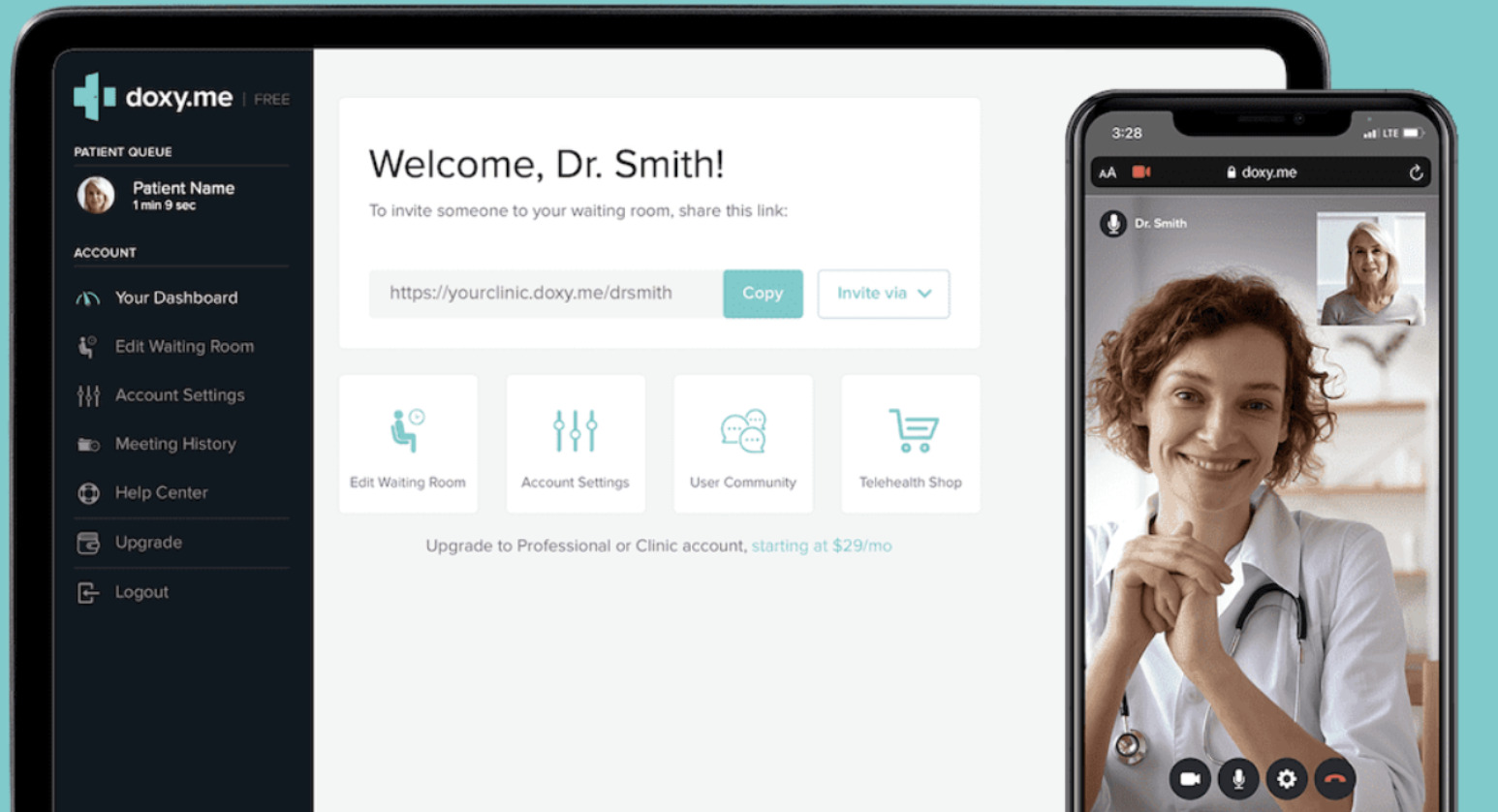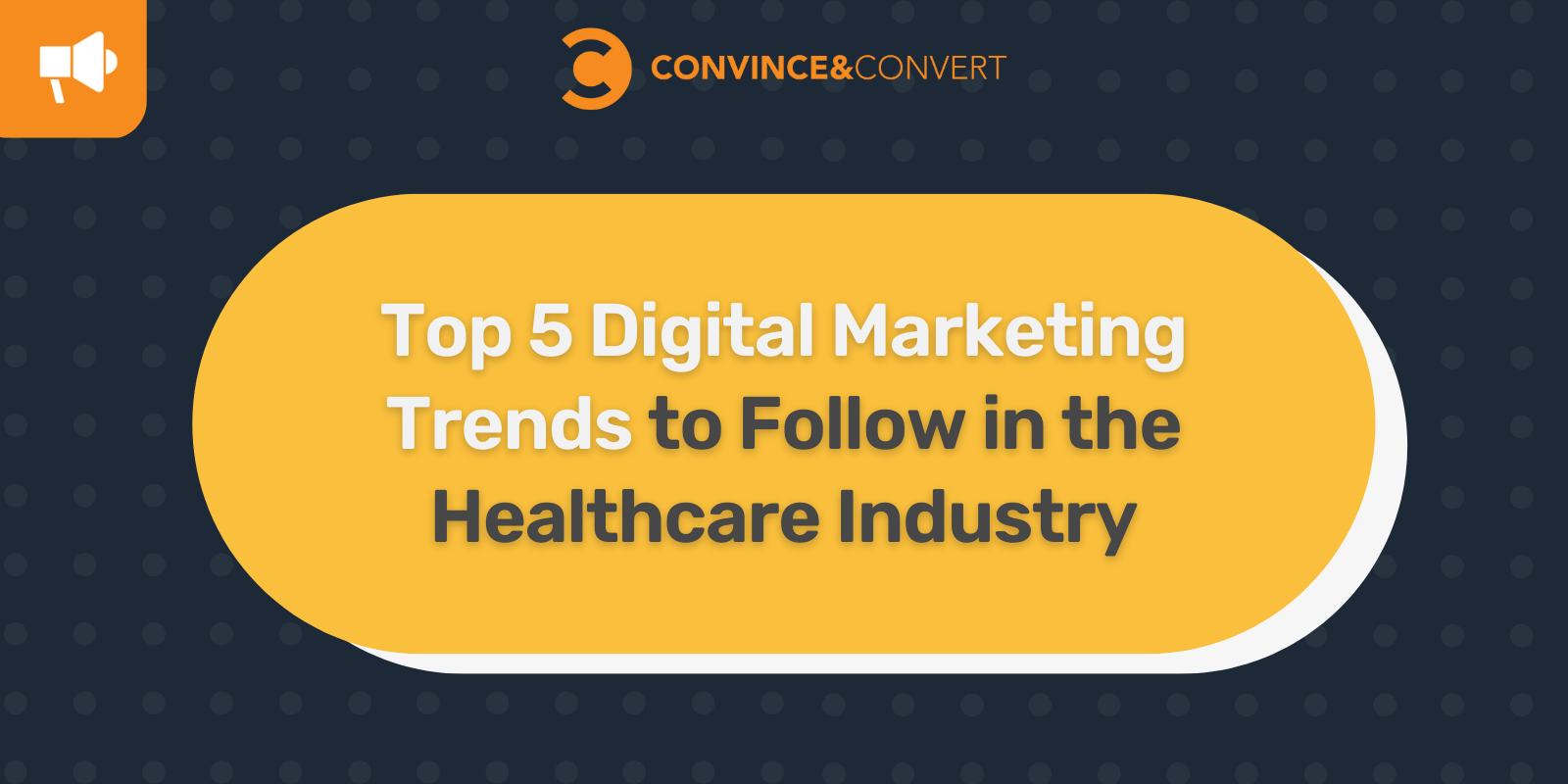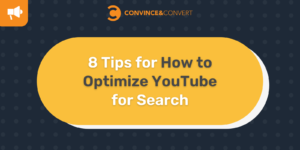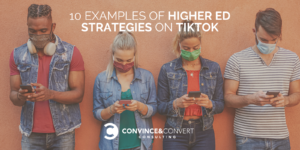Marketing trends today can determine how an entire industry looks and feels. In 2023, the marketing landscape is changing continually. From reels to authentic marketing to TikTok trends, it can be difficult to keep up—especially for people in a highly regulated industry like healthcare.
Truth is, not every shining marketing trend will work for the healthcare industry. But we can implement what’s already working in healthcare marketing. It’s important to keep up with the evolving practices and master growth-hacking marketing practices that can help you stay ahead of the pack.
As you implement your marketing strategy, incorporate these five healthcare marketing trends in healthcare.
1. Telemedicine and Virtual Consultations
Telemedicine was born out of the intersection of healthcare and technology. It is the use of technology such as phones or computers to provide medical, diagnostic, and treatment-related services to patients by doctors.
Virtual consultation in healthcare revolves around remote communication between the healthcare provider and the patient—mostly through video conferencing technology.
Telemedicine and virtual consultations are healthcare marketing trends that provide convenience for patients and reduce the burden on healthcare providers and facilities. It enables you to serve more patients within a shorter duration.
A survey by SingleCare found that 78% of people are willing to use telehealth services. And, 23% of adults in the USA reported using telemedicine between April and October 2021.
This means that telemedicine and virtual consultations can come in handy when attracting new patients or retaining existing ones. Healthcare organizations can use telehealth to provide remote consultations, monitor patients with chronic conditions and even provide mental healthcare.
To stay ahead of this trend, ensure you have a telemedicine platform that works seamlessly, such as Doxy.me, Zoom for Healthcare, etc., and train your staff on usage. You can create video content highlighting how virtual consultations work and promote it on your social media or your website.

Image via Doxy.me
Ultimately, ensure that your telemedicine services are seamless and provide the required convenience to each patient.
2. Personalization and Patient Engagement
Personalization is more than a healthcare marketing trend. It involves tailoring healthcare services and marketing activities uniquely to each individual patient.
Healthcare consumers don’t want to feel lumped up with other patients to become just a statistic. They need an authentic connection through care and communication.
Healthcare marketers can personalize and reach out to each patient individually, connecting them to healthcare professionals.
In healthcare, patient engagement is the process of actively engaging patients in their own healthcare and encouraging them to manage their health better. You can use digital tools like email to educate your patients and empower them better.
Tip: When it comes to emails, make sure to implement DMARC reports so that patients won’t receive messages from unauthorized sources.
Research by Duke Health and Healthwise reports that offering patients personalized health content in the best suitable format at the right time increases the effectiveness of health services by over 30%.
Tips healthcare providers can use to offer personalized marketing techniques:
- Use patient data to get insights on patients’ demographics such as health status, preferences, and needs and tailor messages for specific groups.
- Offer personalized healthcare recommendations based on patient data
- Create directly targeted email marketing campaigns (drip campaigns) to offer patient education and gather patient feedback and issues of concern.
3. Social Media Marketing
Social media marketing in healthcare is a cost-effective way to connect with patients that may also lead to increased revenue. Here are the benefits of using social media in healthcare marketing:
Raise awareness- Social media can raise awareness about emerging and annual health concerns. It can be great when you want to scale up public outreach or inform the public on the latest issues or profile a certain illness or trend.

Image source
- Combat misinformation- Social media is invaluable in spreading factual, helpful, and correct information quickly and to a diverse group. In the wake of fake news and lots of misinformation, more than 50% of Gen Z and Millennials have learned to spot fake news, meaning that any correct information will be well received.
- Answer common questions and improve patient engagement- Healthcare marketers and professionals can use social media to engage the public and answer a common question—especially after self-diagnosing themselves with Dr. Google.
- Crisis communication- With social media, you can provide real-time updates during a crisis. According to Pew Research Center, 82% of U.S. adults get news from social media.
- Increased referrals- Positive experiences shared on social media often encourage patients to recommend healthcare providers to their friends and family, growing your healthcare marketing ROI.
Tips for healthcare providers on using social media to connect with patients
- Create a social media calendar- A social media calendar helps you maintain a consistent posting schedule, save time and plan your content in advance using social media management tools and build a strong social media profile.
- Incorporate patient success stories and testimonials in your posts- This is a great way to raise awareness of your services. However, you should follow ethical and legal guidelines, such as maintaining patient confidentiality.
- Engage with patients through comments and messages- Focus on the social media platform your target audience uses and engage with them. For example, Facebook and Instagram are popular across all ages and have comment and message options. You can
- Advertise strategically- Social media allows you to segment demographics and promote specific services. Ensure you use social media analytics to monitor results and measure engagement.
“By embracing Social Media platforms, you can create stronger connections with patients and cultivate trust. To truly make an impact, develop a well-thought-out content calendar that not only educates but also inspires. Remember, sharing real-life patient success stories, and testimonials can humanize your brand, making it more relatable and authentic.
Don’t forget the power of engagement — respond to comments and messages with warmth and empathy, showcasing your dedication to patient care.
Healthcare professionals can become more than providers; they can become invaluable partners in their patients’ journey to wellness.”
Lilach Bullock – Social Media Strategist
4. Video Marketing
Videos help humanize organizations and create personal touch—especially for healthcare organizations that tend to feel cold and disconnected.
You can use videos to showcase your success stories and testimonials, for your website welcome videos, and even to showcase your physician profiles. Add videos to your social media content and show the personal side of your healthcare organization.
Videos content is more memorable and generates more engagement and shares than image and text by up to 1200%. Videos also help improve patient education by explaining complex medical concepts clearly.
People may share your videos quickly, increasing your brand reach and accessibility. They also enhance brand recognition and increase trust and loyalty among patients and stakeholders.
Tips for creating engaging healthcare videos
- Focus on patient education and awareness- Valuable video content about various conditions, treatments, and preventive measures helps your healthcare organization showcase authority while helping patients improve their health.
- Create visually appealing and easy-to-understand content- This helps make your videos more engaging.
- Use video to showcase healthcare facilities and staff- This gives patients a better sense of what to expect when they visit your facility, building trust and credibility.
- Capitalize on storytelling techniques- Stories have a powerful way of making you more relatable and can help patients connect with the topics you’re discussing.
5. Search Engine Optimization (SEO)
Healthcare SEO is the practice of improving the online presence by improving the quality and quantity of traffic to get more leads and visits from search engines.
SEO cannot be separated from emerging healthcare marketing trends because patients rely heavily on search engines to find health-related information and services. Optimizing your website for search helps you rank higher on search engines leading to more visibility, leads, and, ultimately, more revenue.
Tips for improving healthcare SEO
- Conduct keyword research and identify the most relevant keywords for healthcare marketing and use them to optimize your website pages, meta descriptions, and header tags.
- Create high-quality, informative content using relevant keywords that answers the needs of your potential patients.
- Optimize your website speed, mobile friendliness, and general design for a seamless user experience.
- Distribute your content to different outlets and build high-quality backlinks from sources like healthcare directories and websites.
- Use local SEO to get targeted traffic and increase visibility.
Make Digital Marketing a Priority
The International Data Corporation (IDC) predicted that this year, 65% of patients would access healthcare through a digital front door entry point.
Further statistics show that 90% of your targeted clients are within 10 miles of your biggest competitor in healthcare provision. Think about it, we’re witnessing Walmart, CVS, Amazon, and other big stores making huge leaps in the healthcare space.
And, poor digital experience will drive potential clients away. Research shows that a poor digital experience can make over 20% of younger audiences switch healthcare providers.
Ultimately, you cannot ignore digital marketing trends if you’re in the healthcare industry. Stay up-to-date with the latest telehealth tools, create a strong online presence, and optimize your website for SEO.
Combine social media marketing, email campaigns, and content marketing to improve visibility, engage audiences and build trust by providing valuable content.
About the Author
Mary Mutua
SEO Copywriter with a focus on B2B brands in the Digital Marketing and Finance space, and the founder of Marketing Isle.
Mary believes that content writing is a science that requires a data-driven, human-first approach and also an art that leans heavily on creativity, uniqueness, and authenticity. She focuses on topic clusters as an SEO strategy to demonstrate expertise and authority while improving user experience. When she’s not writing, she’s procrastinating on Twitter or Reddit.
The post Top 5 Digital Marketing Trends to follow in the Healthcare Industry appeared first on Convince & Convert.




![Read more about the article How to Overcome Boilerplate Marketing Approaches (And What to Do Instead) With Mike Poznansky From Neato [AMP 217]](https://www.dimaservices.agency/wp-content/uploads/2021/01/217_Mike-Podcast-Graphics_header-1-300x128.png)